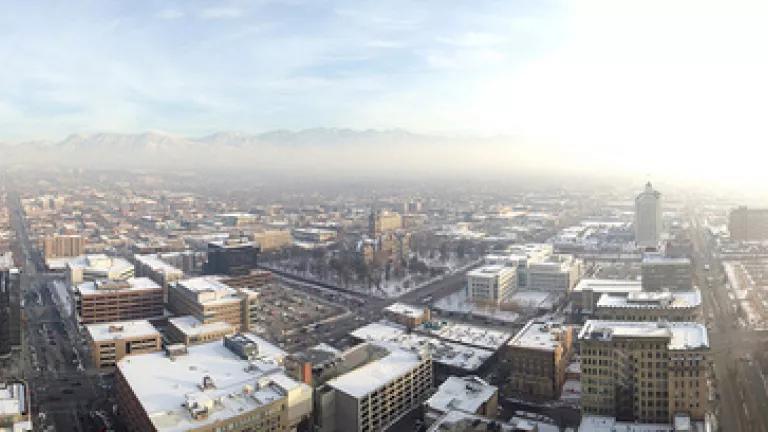Salt Lake City's Mayor Announces Executive Action to Accelerate Energy Efficiency in City Facilities

Salt Lake City is on a roll. Back in mid-2014 EPA Administrator Gina McCarthy helped celebrate the launch of Salt Lake City's Mayor Skyline Challenge, a multi-year competition that encourages building owners to save energy and therefore improve air quality. Then, in December 2014, the White House recognized the city as a Climate Action Champion for showing leadership on climate change through creating a comprehensive suite of policies and programs. And now, Salt Lake City's Mayor Ralph Becker has issued an Executive Order directing city departments to evaluate and implement energy-saving best practices in all City facilities. The Executive Order is a cornerstone of Project Skyline, an initiative designed to cut energy waste in commercial buildings by accelerating investment in energy efficiency and raising public awareness of building performance.
And building performance is something you can actually see in Salt Lake City. Winter is peak inversion season in the Salt Lake Valley, which means high pressure systems over the Wasatch Mountains compress cold air down into the valley where it gets trapped. Over time, the trapped cold air also collects local air pollution emissions, raising health and air quality concerns. I experienced this phenomenon firsthand in late January in which a clear, sunny day in Salt Lake City turned quite clouded in the late afternoon with limited visibility. Emissions from residential and commercial buildings account for nearly 40 percent of the pollutants that affect air quality on winter inversion days. Recognizing this, the City is committed to improving building energy efficiency as a strategy to address air quality concerns.
An inversion day in Salt Lake City (source)
The Executive Order creates an Energy Management Steering Committee comprised of, at minimum, the Airport, Public Services, and Public Utilities departments, and requires City facilities to develop annual Energy Management Plans. There are several key components to the plans that must be addressed including:
- Annual benchmarking of energy consumption and public transparency of that data
- Identifying and documenting energy-saving opportunities every five years, including establishing an audit program
- Developing guidelines and a retrocommissioning and re-tuning plan that ensures that building systems are consistently operating efficiently.
- Creating guidelines for building operator energy management training and requiring that all City facilities be operated by, or under the supervision, of a certified building operator by December 31, 2015
- Developing City employee engagement strategies to ensure awareness and engagement in activities to reach these targets
- Exploring renewable energy opportunities that can be used to offset the energy impacts of municipal operations.
The steps outlined in the Executive Order are best practices from throughout the nation and showcase Salt Lake City's strong leadership. "We must lead by example," said Mayor Becker. "By taking steps to actively monitor our energy use and improve the efficiency of city facilities, we will cut energy waste, improve air quality, protect our natural resources and ultimately save taxpayer dollars."
This blog post was co-written by Irene Burga, Legal Fellow with the City Energy Project.
